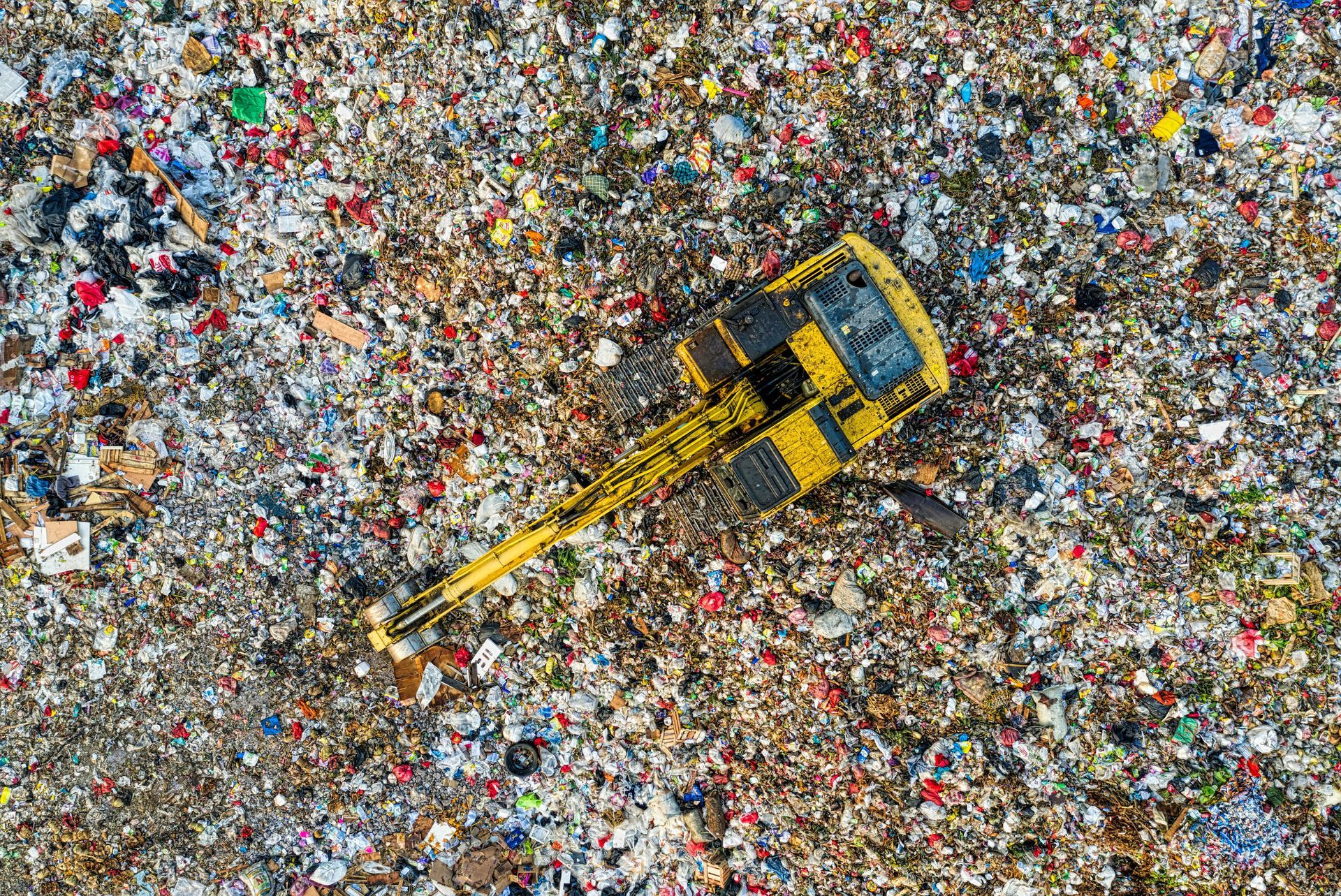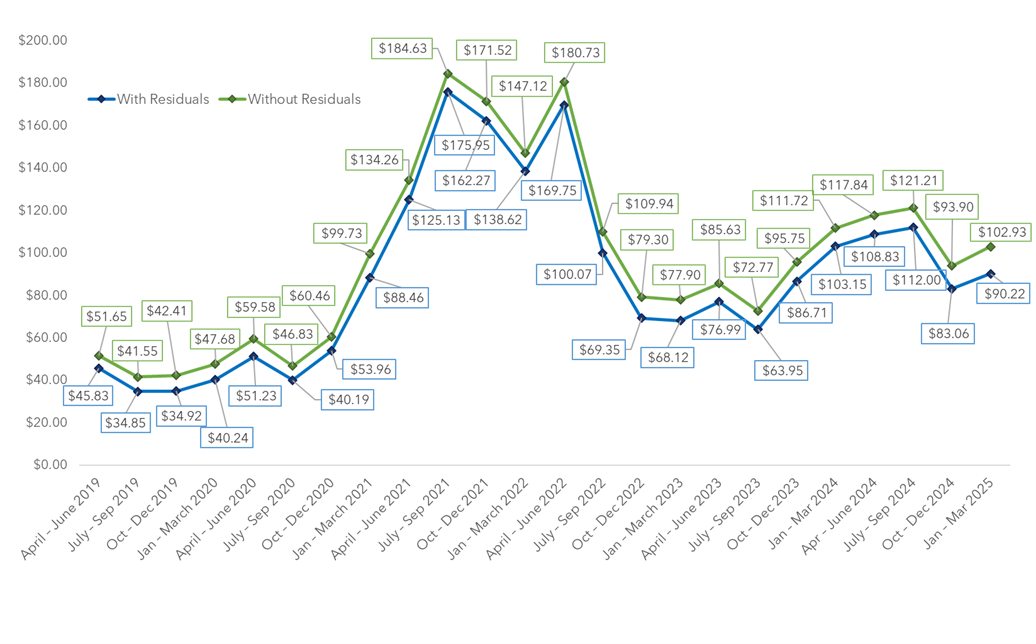NERC News:
All Posts

The Pressurized Cylinder Industry Association is a 501C(6) trade association comprised of leading pressurized cylinder producers. They are “working to advance industry interests through advocacy, sustainable stewardship development, education, and innovative collaboration on shared challenges that impact our industry, our customers, and consumers.” Advocacy, Sustainable Stewardship, Education, and innovation are the pillars of the work they do, including collaborating with state legislators, regulatory officials, and other industry associations, particularly related to Extended Producer Responsibility (EPR) policy work. To expand their impact on EPR legislation, PCIA established a nonprofit Producer Responsibility Organization (PRO) called the Cylinder Collective, which recently launched its first cylinder collection program in the State of Connecticut. “The passage of the legislation in CT, as well as the subsequent implementation of the CT statewide cylinder collection program, allowed PCIA and its staff to gain experience in developing the local partnerships required to implement sustainable solutions at the local level.” David Keeling, Executive Director, Pressurized Cylinder Industry Association and The Cylinder Collective. NERC is thrilled to welcome the Pressurized Cylinder Industry Association to our diverse group of trade association members. We look forward to supporting their industry work and education efforts through collaboration and action. For more information on the Pressurized Cylinder Industry Association visit .

The Town of Stonington in Connecticut has a history dating back to the 1640’s. Today the town features an active community with miles of beach, historic homes, and a dedication to sustainability. Ensuring continued connection to the community, the Town holds over 30 boards, commissions, and committees that help regulate and advise the surrounding area. These Boards include Affordable Housing, Conservation Commission, Cultural District, Water Pollution Control, and more. Stonington is a member of the Southeastern Connecticut Regional Resources Recovery Authority (SCRRRA). Being a member of SCRRRA provides the Town with cost savings on solid waste and recycling, access to specialized disposal services, public education programs, and grant opportunities. The regional approach to waste management gives Stonington and other member towns greater negotiating power and access to resources that would be more difficult to obtain alone. The Town of Stonington is committed to advancing sustainability and responsible resource management within our community. Through initiatives such as Pay-As-You-Throw curbside trash collection, textile and electronics recycling, and household hazardous waste events, they work to reduce waste and promote reuse. Stonington continues to expand its sustainability programs by exploring food scrap diversion and supporting regional collaborations that protect our environment and conserve natural resources. “As a proud new member of the Northeast Recycling Council, we look forward to sharing ideas and strengthening our community’s impact through innovation and partnership.” NERC is thrilled to welcome the Town of Stonington to our growing list of municipality members. We look forward to working with them to help continued education and accessibility for local recycling efforts For more information on the Town of Stonington visit .
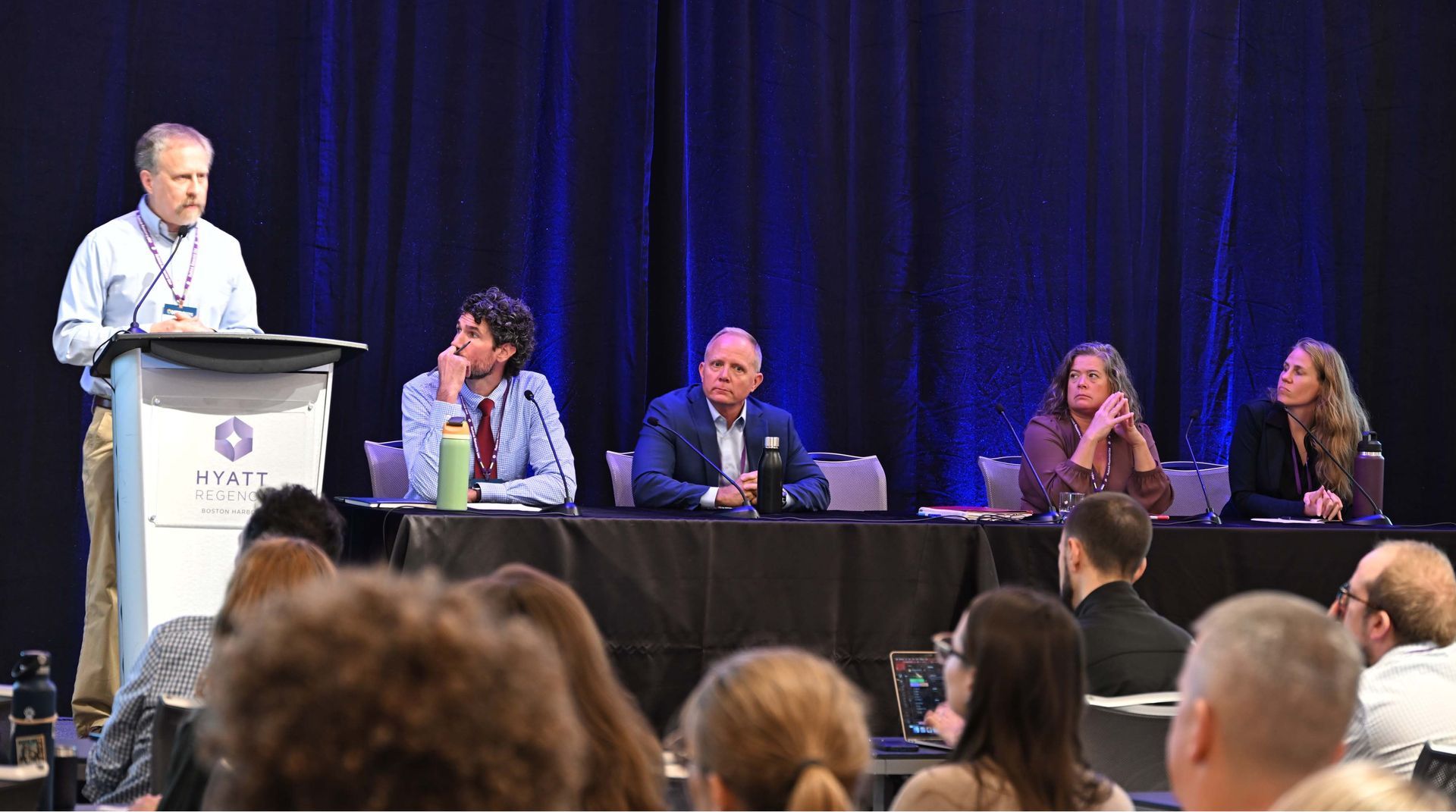
Stress levels are high for CPG companies and packaging groups as extended producer responsibility programs unfold in multiple states. This was on display at three recent Boston events hosted by the Sustainable Packaging Coalition, How2Recycle and the Northeast Recycling Council, with questions flying about costs, policy harmonization and relationships with regulators. Paul Nowak, executive director of GreenBlue, adopted the role of support group leader for a room full of representatives from many of the world’s largest CPG companies in his opening talk at SPC Advance. He reminded them that “you are not alone” and urged them to take the long view on this major industry shift. “What you see at the end of the change is not what you see during the change,” said Nowak, drawing on examples from prior industry shifts as well as other major life events. “You are in this uncomfortable period right now where it’s not moving as rapidly as you would think and you don’t have the historic perspective yet of where it could go.” Sticker shock While CPGs are familiar with EPR costs from programs in other countries, the complexity and scale of the U.S. rollout in seven states is presenting its own unique challenges. Oregon is the only state that’s begun collecting fees, and already the costs are high. Circular Action Alliance, the producer responsibility organization selected for the majority of state programs to date, estimates a budget of $188 million in the program’s first year, with that figure growing in the years ahead. Charlie Schwarze, board chair for CAA and senior director of packaging stewardship at Keurig Dr Pepper, said the costs are starting to resonate with major companies. KDP, for example, has been working to sort out different aspects of its packaging in terms of licensing arrangements, private label manufacturing partnerships and other factors. This requires a close relationship with the company’s finance, R&D and procurement teams to gather data and make cost projections. “It’s been a bit of a slow-moving process because the dollars, at least in 2025, are not extremely notable. But they’re going to get bigger pretty quickly,” he said, citing Colorado and California’s programs on the horizon. Shane Buckingham, chief of staff at CAA, said it will be months until companies have a better sense of the true costs. The group set initial fees for California, which won’t be invoiced until August 2026, but those fee levels are expected to change once SB 54 regulations are finalized . “Please don’t take our early fee schedule of being indicative of what your cost will be in 2027, it’s just a drop in the bucket,” he said. “The fees are going to go up significantly in California because we have to fund a $500 million [plastic] mitigation fund, we’re going to have system funding to improve recycling, source reduction, reuse, refill.” SPC Director Olga Kachook encouraged attendees to think about these fees as motivation to innovate rather than a burden. In her view, avoided fees through ecomodulation could be viewed as “possible new investment capital” for covering the costs of material switches, R&D, MRF testing, consumer education campaigns and more. “We can innovate to those lower fees by switching to incentivized materials and formats and then we can reinvest the savings back into sustainable materials and infrastructure that seemed out of reach,” she said. Searching for harmony All three events also featured ample discussion about if or how aspects of current EPR programs could be better aligned. While regulators are working to align certain definitions where possible, they also noted that certain state programs were uniquely designed for a reason. David Allaway, senior policy analyst at the Oregon Department of Environmental Quality, said during NERC’s Rethink Resource Use Conference that he sees a potential benefit to harmonizing ecomodulation approaches in some cases. But at the same time, he said, “I fear that the push for harmonization will lead to a race to the bottom” by potentially limiting the ability for states to craft policies based on their respective needs. As for those who critique other unique aspects of Oregon’s law, such as responsible end market requirements , Allaway said “that’s not negotiable for us,” as market issues were a leading motivation for the law in the first place. Allaway said Oregon’s system was established based on specific regional priorities, such as putting an end to exporting certain types of material that led to dumping in other countries. The state’s approach to ecomodulation and life cycle analysis is also informed by years of work on greenhouse gas inventories and consumption-based accounting, which challenges many commonly held assumptions about recyclability . Each state has its own unique factors in terms of collection access and market infrastructure. Colorado, for example, has many areas that will be getting recycling service for the first time. Maine also has many rural areas that previously had access to recycling but lost it in recent years. Meanwhile, in Maryland, collection service may be more common but local end markets are lacking for certain commodities. Jason Bergquist, vice president of consulting firm RecycleMe, said during the NERC event that he hears concerns from clients about where this is all headed. “If we get to a couple years down the road and we’ve got, let’s just pretend, 25 states with EPR, with different deadlines, different [covered material] lists, different definitions, different ecomodulation — my concern as a fan of EPR is that the pushback will be so significant that it could get existential for the producers,” he said, in terms of costs and compliance management. At the same time, Bergquist said the experiences of packaging EPR in Europe and Canada show it may take years to get toward any kind of harmonized system. Back at SPC Advance and the co-located How2Recycle Summit, California loomed large throughout the week when it came to these questions. Karen Kayfetz, chief of CalRecycle’s product stewardship branch, said regulators from different EPR states try to talk to one another as much as possible but in some cases they’re limited by the statutes that created these programs. “We each have our own legal frameworks we have to work within,” she said. “So harmonization starts with the legislatures, and that is not our responsibility, but it is something that we could see change and evolve over the coming years.” As all of these complex questions get worked out, Kayfetz reminded attendees that CalRecycle may currently be “the face” of the program but that’s not the long-term goal. “What would make me the happiest is if you leave here thinking ‘let’s go talk more to CAA.’ Because EPR is a policy mechanism that is meant to be a public-private partnership where the public entity ... is overseeing the PRO,” she said. “They are your partner and we are their police.” In a separate session, CAA’s Buckingham described the work of ramping up different state fee and reporting programs as building a plane while flying it. The group is working to streamline its own reporting processes as much as possible, but they and others anticipate things will only get more complicated in the near term. “2026 will bring with it a new set of EPR laws and recycled content laws,” predicted KDP’s Schwarze, “and they’re going to be different than what we have right now.” Read on Packaging Dive.
Posts Sorted by Categories
In The News

Stress levels are high for CPG companies and packaging groups as extended producer responsibility programs unfold in multiple states. This was on display at three recent Boston events hosted by the Sustainable Packaging Coalition, How2Recycle and the Northeast Recycling Council, with questions flying about costs, policy harmonization and relationships with regulators. Paul Nowak, executive director of GreenBlue, adopted the role of support group leader for a room full of representatives from many of the world’s largest CPG companies in his opening talk at SPC Advance. He reminded them that “you are not alone” and urged them to take the long view on this major industry shift. “What you see at the end of the change is not what you see during the change,” said Nowak, drawing on examples from prior industry shifts as well as other major life events. “You are in this uncomfortable period right now where it’s not moving as rapidly as you would think and you don’t have the historic perspective yet of where it could go.” Sticker shock While CPGs are familiar with EPR costs from programs in other countries, the complexity and scale of the U.S. rollout in seven states is presenting its own unique challenges. Oregon is the only state that’s begun collecting fees, and already the costs are high. Circular Action Alliance, the producer responsibility organization selected for the majority of state programs to date, estimates a budget of $188 million in the program’s first year, with that figure growing in the years ahead. Charlie Schwarze, board chair for CAA and senior director of packaging stewardship at Keurig Dr Pepper, said the costs are starting to resonate with major companies. KDP, for example, has been working to sort out different aspects of its packaging in terms of licensing arrangements, private label manufacturing partnerships and other factors. This requires a close relationship with the company’s finance, R&D and procurement teams to gather data and make cost projections. “It’s been a bit of a slow-moving process because the dollars, at least in 2025, are not extremely notable. But they’re going to get bigger pretty quickly,” he said, citing Colorado and California’s programs on the horizon. Shane Buckingham, chief of staff at CAA, said it will be months until companies have a better sense of the true costs. The group set initial fees for California, which won’t be invoiced until August 2026, but those fee levels are expected to change once SB 54 regulations are finalized . “Please don’t take our early fee schedule of being indicative of what your cost will be in 2027, it’s just a drop in the bucket,” he said. “The fees are going to go up significantly in California because we have to fund a $500 million [plastic] mitigation fund, we’re going to have system funding to improve recycling, source reduction, reuse, refill.” SPC Director Olga Kachook encouraged attendees to think about these fees as motivation to innovate rather than a burden. In her view, avoided fees through ecomodulation could be viewed as “possible new investment capital” for covering the costs of material switches, R&D, MRF testing, consumer education campaigns and more. “We can innovate to those lower fees by switching to incentivized materials and formats and then we can reinvest the savings back into sustainable materials and infrastructure that seemed out of reach,” she said. Searching for harmony All three events also featured ample discussion about if or how aspects of current EPR programs could be better aligned. While regulators are working to align certain definitions where possible, they also noted that certain state programs were uniquely designed for a reason. David Allaway, senior policy analyst at the Oregon Department of Environmental Quality, said during NERC’s Rethink Resource Use Conference that he sees a potential benefit to harmonizing ecomodulation approaches in some cases. But at the same time, he said, “I fear that the push for harmonization will lead to a race to the bottom” by potentially limiting the ability for states to craft policies based on their respective needs. As for those who critique other unique aspects of Oregon’s law, such as responsible end market requirements , Allaway said “that’s not negotiable for us,” as market issues were a leading motivation for the law in the first place. Allaway said Oregon’s system was established based on specific regional priorities, such as putting an end to exporting certain types of material that led to dumping in other countries. The state’s approach to ecomodulation and life cycle analysis is also informed by years of work on greenhouse gas inventories and consumption-based accounting, which challenges many commonly held assumptions about recyclability . Each state has its own unique factors in terms of collection access and market infrastructure. Colorado, for example, has many areas that will be getting recycling service for the first time. Maine also has many rural areas that previously had access to recycling but lost it in recent years. Meanwhile, in Maryland, collection service may be more common but local end markets are lacking for certain commodities. Jason Bergquist, vice president of consulting firm RecycleMe, said during the NERC event that he hears concerns from clients about where this is all headed. “If we get to a couple years down the road and we’ve got, let’s just pretend, 25 states with EPR, with different deadlines, different [covered material] lists, different definitions, different ecomodulation — my concern as a fan of EPR is that the pushback will be so significant that it could get existential for the producers,” he said, in terms of costs and compliance management. At the same time, Bergquist said the experiences of packaging EPR in Europe and Canada show it may take years to get toward any kind of harmonized system. Back at SPC Advance and the co-located How2Recycle Summit, California loomed large throughout the week when it came to these questions. Karen Kayfetz, chief of CalRecycle’s product stewardship branch, said regulators from different EPR states try to talk to one another as much as possible but in some cases they’re limited by the statutes that created these programs. “We each have our own legal frameworks we have to work within,” she said. “So harmonization starts with the legislatures, and that is not our responsibility, but it is something that we could see change and evolve over the coming years.” As all of these complex questions get worked out, Kayfetz reminded attendees that CalRecycle may currently be “the face” of the program but that’s not the long-term goal. “What would make me the happiest is if you leave here thinking ‘let’s go talk more to CAA.’ Because EPR is a policy mechanism that is meant to be a public-private partnership where the public entity ... is overseeing the PRO,” she said. “They are your partner and we are their police.” In a separate session, CAA’s Buckingham described the work of ramping up different state fee and reporting programs as building a plane while flying it. The group is working to streamline its own reporting processes as much as possible, but they and others anticipate things will only get more complicated in the near term. “2026 will bring with it a new set of EPR laws and recycled content laws,” predicted KDP’s Schwarze, “and they’re going to be different than what we have right now.” Read on Packaging Dive.
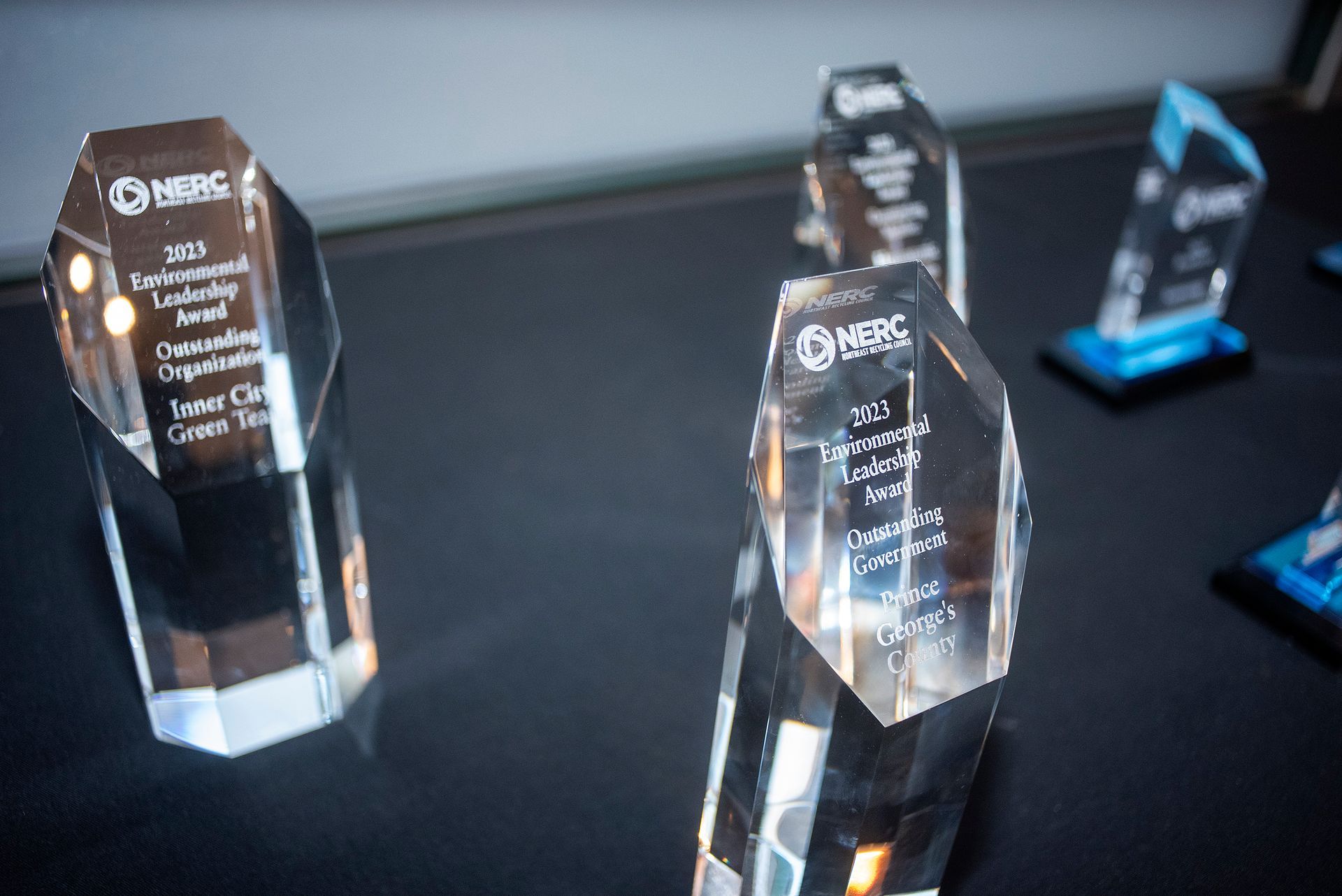
The City of Medford won the 2025 Environmental Leadership Award for Outstanding Community presented by the Northeast Recycling Council, for its innovative work to reduce waste and create a more sustainable waste collection system through the City’s free curbside composting program. “I'm thankful to our team at City Hall, the Solid Waste Taskforce, our consultants Strategy Zero Waste and our volunteers for working so hard to launch our curbside composting program and making it such a meaningful success for our community,” Mayor Breanna Lungo-Koehn said. “This award shows that the work we’re doing in both composting and recycling is having real, transformative effects on how our community thinks about waste and the steps we’re taking to create a more sustainable environment for the future. We are honored to be recognized by the Northeast Recycling Council for these efforts.” Each year, NERC honors a community, an organization, and an individual for their outstanding contributions to recycling education and innovation. This year will mark the 9th annual Environmental Leadership Awards Ceremony, recognizing individuals and organizations who help further NERC’s waste and recycling goals. “Our committee is wholeheartedly impressed by the work of the City of Medford, and how important and impactful that work is for the community,” said Sophie Leone, Development and Program Manager at NERC. “It is a perfect representation of NERC’s mission to minimize waste, conserve natural resources, and advance a sustainable economy through facilitated collaboration and action and we are very excited to bestow the City of Medford with this award.” You can read more about the Environmental Leadership Awards here . And if you haven’t signed up for Medford’s free curbside composting program, you can do that at medfordcomposts.com . Read on MedfordMA.org.
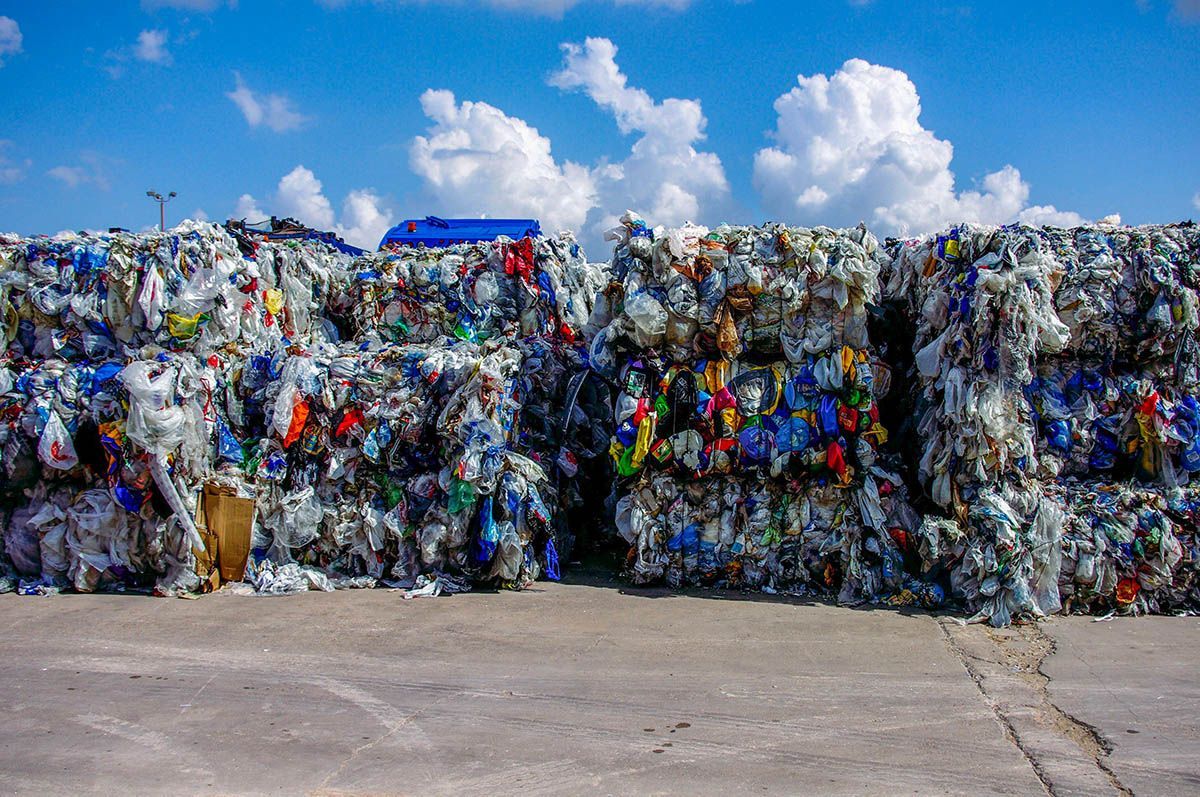
In the Northeast, recycled commodity prices continued to decline in April-June, with MRFs experiencing an average decrease of nearly 6% compared to the first quarter of 2025, according to the Northeast Recycling Council’s (NERC) second-quarter MRF Values Survey Report. NERC’s 25th quarterly report analyzed data from 19 MRFs across 12 states, excluding two facilities from the average blended value “because they did not market enough commodities within Q2 to provide a representative comparison with other MRFs.” Compared to the previous quarter, the responding MRFs reported average values per ton for blended recyclables with residuals at $82.68, a decrease of 7.74%, or $96.21 per ton, a 5.99% decline without residuals. Thirteen of the 17 MRFs contributing to the weighted average were single-stream, while four operated on a dual-stream/source-separated basis. In the Northeast, dual-stream facilities reported a blended value of $99.74 without residuals and $86.52 including residuals, experiencing decreases of 7% and 7.16% from the previous quarter, respectively. Single-stream MRFs recorded blended values of $95.08 without residuals, down 5.7%, and $81.28,down 8.3%, with residuals. Factors such as tariffs and weak demand have led major waste haulers to adjust their forecasts, anticipating challenges due to economic uncertainty for the remainder of 2025. This dip in commodity prices was reflected in second-quarter earnings reports, with four companies reporting an average year-over-year decrease of 15% in commodity values. Houston-based WM projected a $15 million decline in earnings before interest, taxes, depreciation, and amortization due to softening demand. However, the emergence of new and upgraded polymer facilities is enhancing processing capabilities, driven by the expectation of high demand for recycled PET. A version of this story appeared in Resource Recycling on Sept 9. Read on Resource Recycling.
Press Releases
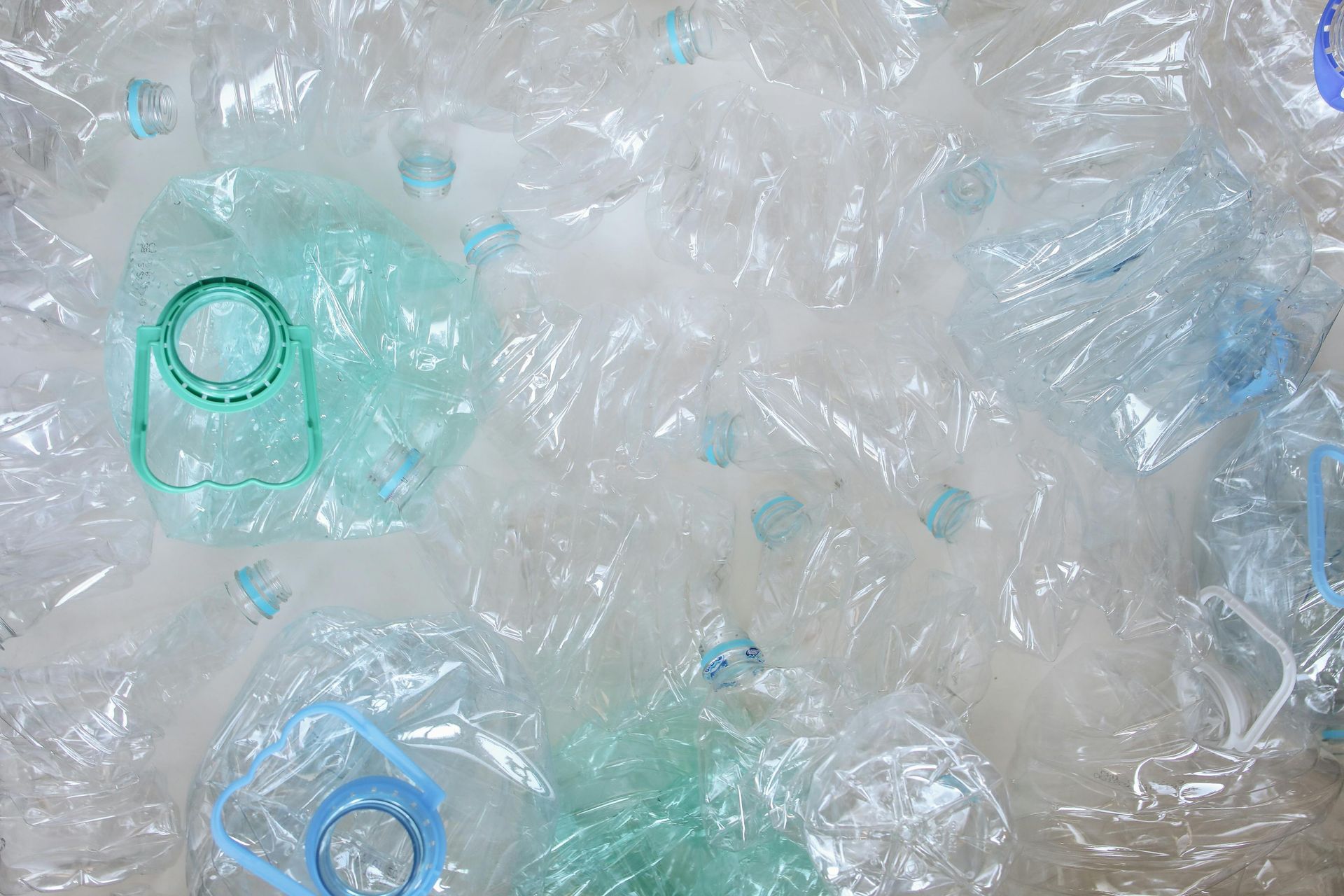
The Northeast Recycling Council (NERC) published its Chemical Recycling Policy Position on May 30, 2025. The purpose of the policy statement is to articulate guiding principles for environmentally responsible chemical recycling of plastics. NERC supports the conservation of natural resources, waste minimization, and recognizes the role of recycling in reaching these goals. Plastic is a prevalent material for packaging and other products due to its material properties. Producing virgin plastic from fossil fuels is an extractive process with negative environmental and social impacts. Therefore, NERC supports reduction, reuse, and recycling processes that displace virgin production in plastics where environmentally preferable. You can view the policy statement here: https://www.nerc.org/chemical-recycling . The Policy Position was developed by the Subcommittee of the NERC Chemical Recycling Committee. Participants on the Subcommittee included Committee Chair Tom Metzner, Connecticut Department of Energy and Environmental Protection (CTDEEP); Claudine Ellyin, Massachusetts Department of Environmental Protection (MassDEP); John Fay, Northeast Waste Management Officials' Association (NEWMOA); Anthony Fontana, New Jersey Department of Environmental Protection (NJDEP), Retired ; Michael Fowler, New Jersey Department of Environmental Protection (NJDEP); Timothy Kerr, Maryland Department of the Environment (MDE), Left MDE ; Shannon McDonald, Maryland Department of the Environment (MDE); Chaz Miller, Ex-Officio, NERC Board; Elizabeth Moore, Connecticut Department of Energy and Environmental Protection (CTDEEP); Marc Moran, Pennsylvania Department Of Environmental Protection; Michael Nork, New Hampshire Department Of Environmental Services; Megan Schulz-Fontes, Northeast Recycling Council (NERC); and Richard Watson, Delaware Solid Waste Authority (DSWA). NERC created the Chemical Recycling Committee in 2022 with the goal of sharing information on new technologies called “chemical recycling.” The Committee shares information on the efficacy, cost, and impacts of these new technologies. Our Policy is the result of those efforts. The Committee is open to NERC state members and several advisory member organizations whose participation has been approved by the state members serving on the committee. NERC has published several other policy positions including the Post-Consumer Recycled Content Policy (2019) and Product Stewardship and Producer Responsibility Policy (2018), which can be found among others on NERC’s website: https://www.nerc.org/policy-positions-and-statements . For more information, contact Megan Schulz-Fontes, Executive Director, at megan@nerc.org .
Thought Leadership
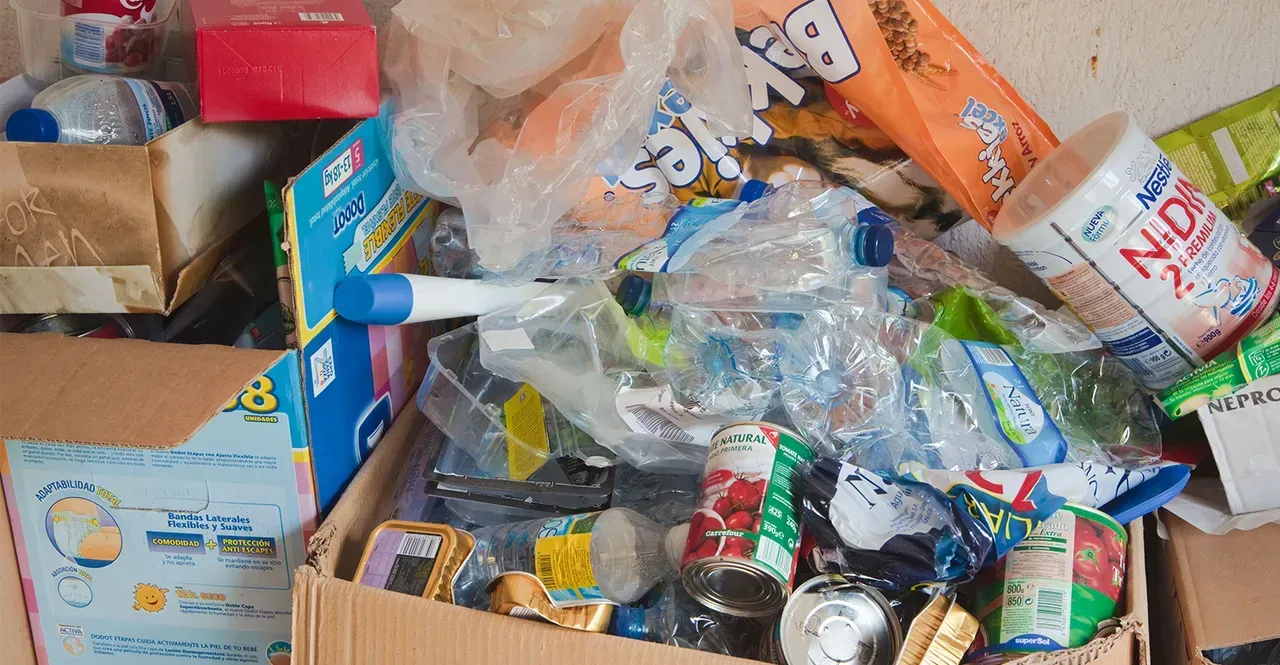
Recycling coordinators know that some people and locations are stubbornly indifferent to recycling. COVID has ruptured civic values and behavior. Creating a recycling culture is harder than ever. Producers know how to sell their products. Now they need to learn how to sell recycling. On July 1, Oregon’s packaging and paper extended producer responsibility (EPR) program begins operating. This will be a first in our country. “Producers”, instead of local governments or private citizens, will be paying to recycle packages and paper products. Colorado’s program begins operating early in 2026. For years we have heard the theory of how packaging EPR will work. At last, we will get results. Five other states also have laws. Their programs should all be operating by 2030. None of the state laws have identical requirements. The Circular Action Alliance, the “producer responsibility organization” responsible for managing the program in most of those states, knows it has a lot on its plate. EPR laws are not new to the U.S. Thirty-two states already have laws that cover a wide variety of products such as electronics, paint, mattresses, batteries, etc. Those laws are relatively simple. Most cover one product. The producer group is a small number of companies. Goals and programs are focused and narrow. They are a mixed bag of success and failure. Packaging EPR is far more complex. The number of covered products is way higher. Thousands of companies are paying for these programs. Goals are challenging. Some are impossible to meet. In addition, local governments treat recycling as a normal service. Their residents will still call them if their recyclables aren’t picked up. It probably hasn’t helped that advocates tout EPR as the solution for recycling’s problems. We are told we will have more collection and better processing with higher recycling rates. Markets will improve and even stabilize. Some of this will happen, but not all. Collection and processing should go smoothly in Oregon. The state has high expectations for recycling. I have no doubt recycling will increase. Collection programs will blanket the state, giving more households the opportunity to recycle. I’m not sure, though, how much of an increase we will see. Recycling coordinators know that some people and locations are stubbornly indifferent to recycling. COVID has ruptured civic values and behavior. Creating a recycling culture is harder than ever. Producers know how to sell their products. Now they need to learn how to sell recycling. Another challenge is the “responsible end market” requirements. You’ve probably seen pictures of overseas dumps created by unscrupulous or just naïve plastics “recyclers”. In response, Oregon and the other states are requiring sellers and end markets to prove they are “responsible”. They must provide information about who and where they are, how they operate, how much was actually recycled, and more. Recycling end markets pushed back. Paper and metals recyclers argue they shouldn’t be covered. They don’t cause those problems. As for plastics, the general manager of one of America’s largest plastics recycling companies said his company now spends time and money gathering data and filling out forms to prove they’re “responsible”. His virgin resin competitors don’t have to. Ironically, we now import more plastics for recycling than we export. Maybe those countries should impose similar requirements on their plastics recyclers. Colorado faces unique problems. The mountain state is large. Its population is concentrated on the I-25 corridor running north and south through Denver with low population density elsewhere. Recycling collection and processing is limited as are end markets. To make matters worse, slightly more than half of its households use “subscription” services for waste and recycling collection. Those services are funded by the households, not by taxpayers. EPR doesn’t have this experience in other countries. Colorado gets to blaze this trail. The second state to go live poses substantive challenges for producers. The good news for both states? Local governments that pay for recycling collection and processing will see most of those costs go away. Consumers are unlikely to see prices rise, for now. National companies will simply spread their costs among all 50 states. Local and regional producers, unfortunately, don’t have that advantage. As for improved markets, remember that recyclables are and always will be commodities subject to the ups and downs of the economy. I don’t see substantive changes in recycling markets unless the producer group’s members try to manipulate markets to their own advantage. 2025 saw new laws and changes to existing laws. Maryland and Washington became the sixth and seventh packaging EPR states. At the same time, California is rewriting its regulations and Maine significantly revised its law. Some of these changes narrowed EPR’s scope to the dismay of advocates. I’m a member of Maryland’s EPR Advisory Council. We’ve been meeting for a year, discussing the Needs Assessment and now our new law. We have our own unique set of challenges. We also have a big advantage. We can learn from Oregon’s and Colorado’s experiences. Tune in next year to learn how we are progressing. Read on Waste360.

Despite claims that recycling is a "lie," the reality is that recyclables are valuable raw materials, not just waste shipped overseas, and strict industry standards help ensure their quality. While fraudulent practices exist, the U.S. is actually a net importer of recycled plastics, and more advocacy is needed to combat misinformation and highlight recycling’s success. Once again, recycling is under attack. Once again, we are being told that recycling is a lie. That the recyclables we sort and place on the curbside are just mixed with garbage and shipped overseas. That we are sending our trash to unsuspecting countries. Once again, this is not true. The most recent attack came in a Valentine’s Day The New York Times opinion piece The Story You Have Been Told About Recycling Is A Lie . We are told that we stopped sending our trash to the nearest landfill and instead chose to send it across the oceans. This, of course, is utter nonsense. Why would anyone send garbage overseas when the transportation cost to the nearest landfill and its tipping fee is so much less than the cost of sending it further? What is particularly egregious is the lack of data. We aren’t told what “trash” is or how many tons we ship to other countries. Is “trash” our run of the mill garbage or is it bales of mixed plastics sold by unscrupulous dealers as recyclable plastics in spite of diapers and bags in the bales? Nor are we told about the hundreds of millions of tons of metals, paper, glass, plastics and electronics that are routinely recycled throughout the world. Why mess up a good story with facts. The reality that con artists sell bales of contaminated “recyclables” is nothing new. That’s why the Recycled Materials Association developed specifications defining hundreds of grades of metal, paper, glass, plastic and electronic recyclables. Those specs include strict limits on “contaminants” and “prohibitives” so that buyers get raw materials, not trash. ReMA’s specs helped make metals, paper and glass recycling the success they are throughout the world. They have the potential to do the same for plastics and electronics. Oddly, the Times piece makes no mention of that success. Read the full article.
Member Spotlights

The Pressurized Cylinder Industry Association is a 501C(6) trade association comprised of leading pressurized cylinder producers. They are “working to advance industry interests through advocacy, sustainable stewardship development, education, and innovative collaboration on shared challenges that impact our industry, our customers, and consumers.” Advocacy, Sustainable Stewardship, Education, and innovation are the pillars of the work they do, including collaborating with state legislators, regulatory officials, and other industry associations, particularly related to Extended Producer Responsibility (EPR) policy work. To expand their impact on EPR legislation, PCIA established a nonprofit Producer Responsibility Organization (PRO) called the Cylinder Collective, which recently launched its first cylinder collection program in the State of Connecticut. “The passage of the legislation in CT, as well as the subsequent implementation of the CT statewide cylinder collection program, allowed PCIA and its staff to gain experience in developing the local partnerships required to implement sustainable solutions at the local level.” David Keeling, Executive Director, Pressurized Cylinder Industry Association and The Cylinder Collective. NERC is thrilled to welcome the Pressurized Cylinder Industry Association to our diverse group of trade association members. We look forward to supporting their industry work and education efforts through collaboration and action. For more information on the Pressurized Cylinder Industry Association visit .

The Town of Stonington in Connecticut has a history dating back to the 1640’s. Today the town features an active community with miles of beach, historic homes, and a dedication to sustainability. Ensuring continued connection to the community, the Town holds over 30 boards, commissions, and committees that help regulate and advise the surrounding area. These Boards include Affordable Housing, Conservation Commission, Cultural District, Water Pollution Control, and more. Stonington is a member of the Southeastern Connecticut Regional Resources Recovery Authority (SCRRRA). Being a member of SCRRRA provides the Town with cost savings on solid waste and recycling, access to specialized disposal services, public education programs, and grant opportunities. The regional approach to waste management gives Stonington and other member towns greater negotiating power and access to resources that would be more difficult to obtain alone. The Town of Stonington is committed to advancing sustainability and responsible resource management within our community. Through initiatives such as Pay-As-You-Throw curbside trash collection, textile and electronics recycling, and household hazardous waste events, they work to reduce waste and promote reuse. Stonington continues to expand its sustainability programs by exploring food scrap diversion and supporting regional collaborations that protect our environment and conserve natural resources. “As a proud new member of the Northeast Recycling Council, we look forward to sharing ideas and strengthening our community’s impact through innovation and partnership.” NERC is thrilled to welcome the Town of Stonington to our growing list of municipality members. We look forward to working with them to help continued education and accessibility for local recycling efforts For more information on the Town of Stonington visit .
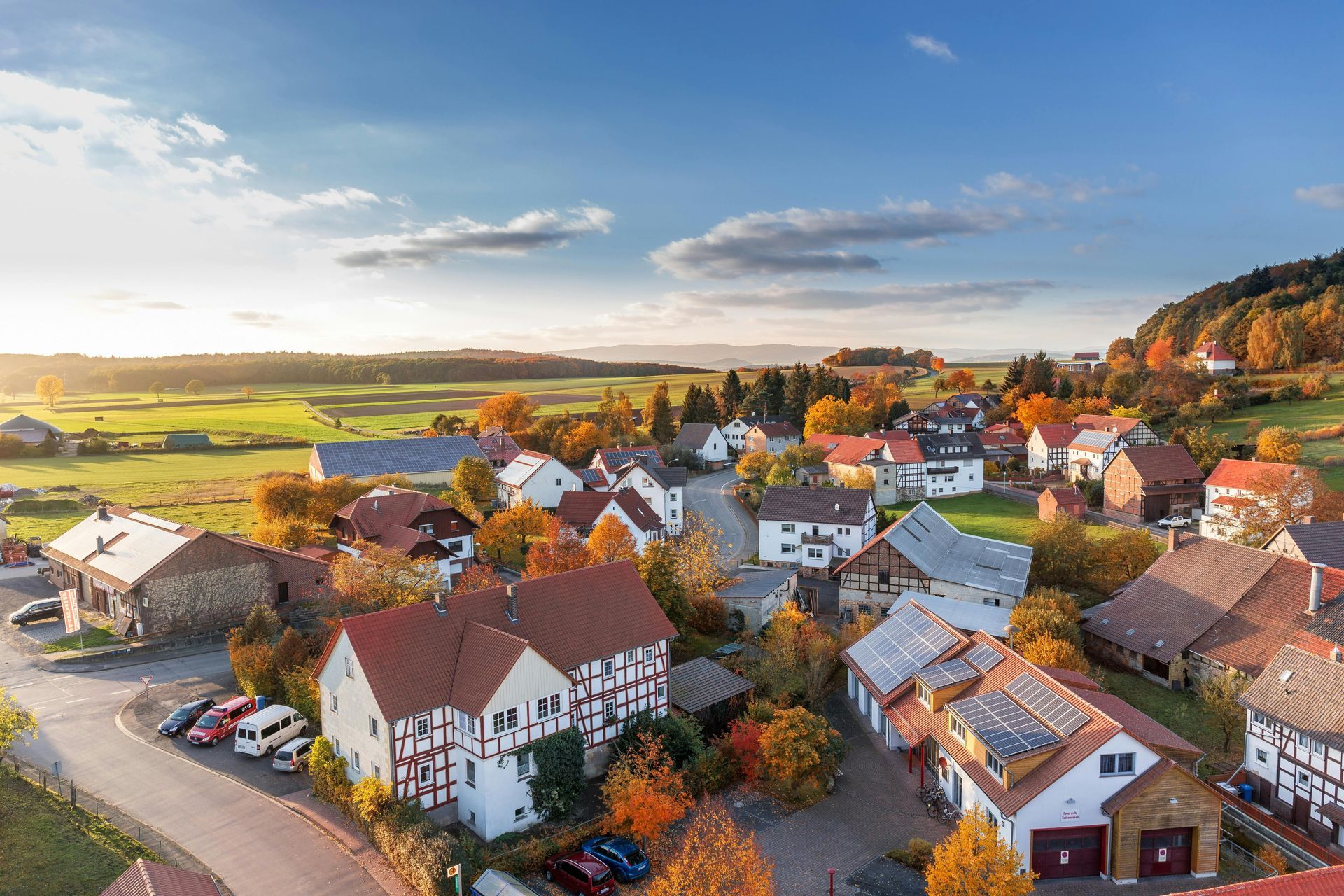
The City of Laurel, Maryland, established in 1870, has a deep and rich history within the state. Its long-standing independence and stability have fostered a strong sense of community, providing residents with valuable resources and support. Laurel is deeply committed to sustainability, embedding green initiatives into its core values, creating a Sustainability Division and completing the City’s first Sustainability Plan as one of many ways to support a sustainable Laurel community. The city’s mission is guided by four foundational pillars: People, Planet, Prosperity, Peace and Partnership. Laurel defines sustainability as “meeting the environmental, social, and economic needs of the present generation without compromising the ability of future generations to meet their needs.” Residents can engage with their community in numerous ways, including joining local clubs, participating in municipal committees, and taking part in community surveys. The city also hosts in-person events such as parades, farmers markets, and sustainability initiatives, further strengthening community bonds. To make waste management, recycling and organics recycling more accessible, Laurel provides detailed information on its dedicated Green Living Resource page found on the City’s website and partners with Recycle Coach, an app that helps residents easily access tailored information on residential collections, recycling and organics recycling. The Recycle Coach app also notifies residents of changes to their service days and special sustainability events. The City of Laurel continues to lead by example in sustainability and community engagement. As environmentalist Wendell Berry once said, “The Earth is what we all have in common.” Laurel’s dedication to green living ensures that future generations will inherit a thriving, sustainable community. NERC is thrilled to welcome the City of Laurel to our growing list of municipality members. We look forward to working with them to help advance our collective missions in safeguarding the planet. For more information on the City of Laurel visit.


